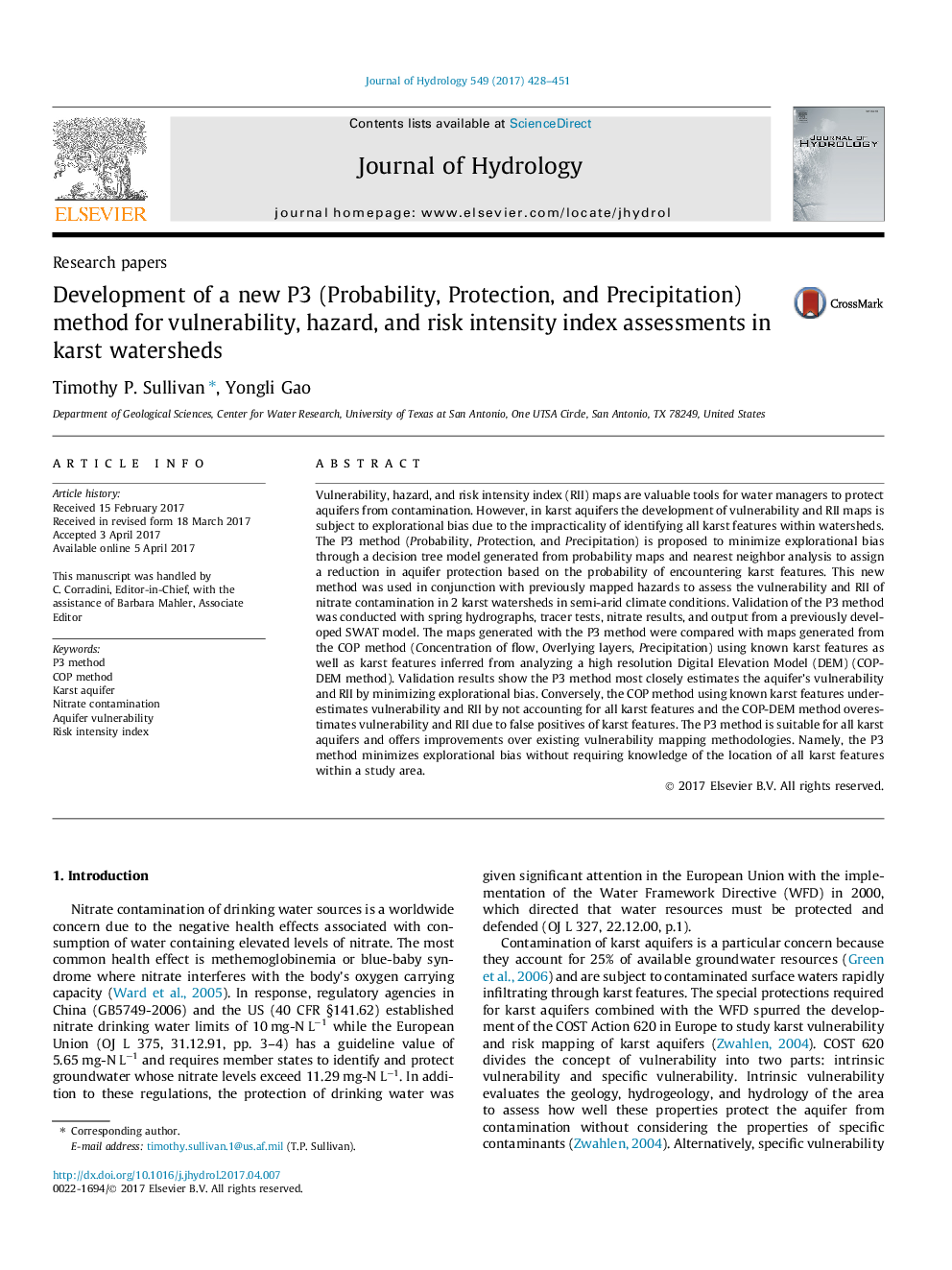| کد مقاله | کد نشریه | سال انتشار | مقاله انگلیسی | نسخه تمام متن |
|---|---|---|---|---|
| 5770995 | 1629905 | 2017 | 24 صفحه PDF | دانلود رایگان |

- Existing karst vulnerability assessment methods suffer from explorational bias.
- P3 method is proposed as a new karst vulnerability assessment methodology.
- P3 method minimizes explorational bias by using karst probability and decision tree.
- P3 method was successfully validated in two karst watersheds in a semi-arid climate.
Vulnerability, hazard, and risk intensity index (RII) maps are valuable tools for water managers to protect aquifers from contamination. However, in karst aquifers the development of vulnerability and RII maps is subject to explorational bias due to the impracticality of identifying all karst features within watersheds. The P3 method (Probability, Protection, and Precipitation) is proposed to minimize explorational bias through a decision tree model generated from probability maps and nearest neighbor analysis to assign a reduction in aquifer protection based on the probability of encountering karst features. This new method was used in conjunction with previously mapped hazards to assess the vulnerability and RII of nitrate contamination in 2 karst watersheds in semi-arid climate conditions. Validation of the P3 method was conducted with spring hydrographs, tracer tests, nitrate results, and output from a previously developed SWAT model. The maps generated with the P3 method were compared with maps generated from the COP method (Concentration of flow, Overlying layers, Precipitation) using known karst features as well as karst features inferred from analyzing a high resolution Digital Elevation Model (DEM) (COP-DEM method). Validation results show the P3 method most closely estimates the aquifer's vulnerability and RII by minimizing explorational bias. Conversely, the COP method using known karst features underestimates vulnerability and RII by not accounting for all karst features and the COP-DEM method overestimates vulnerability and RII due to false positives of karst features. The P3 method is suitable for all karst aquifers and offers improvements over existing vulnerability mapping methodologies. Namely, the P3 method minimizes explorational bias without requiring knowledge of the location of all karst features within a study area.
Journal: Journal of Hydrology - Volume 549, June 2017, Pages 428-451